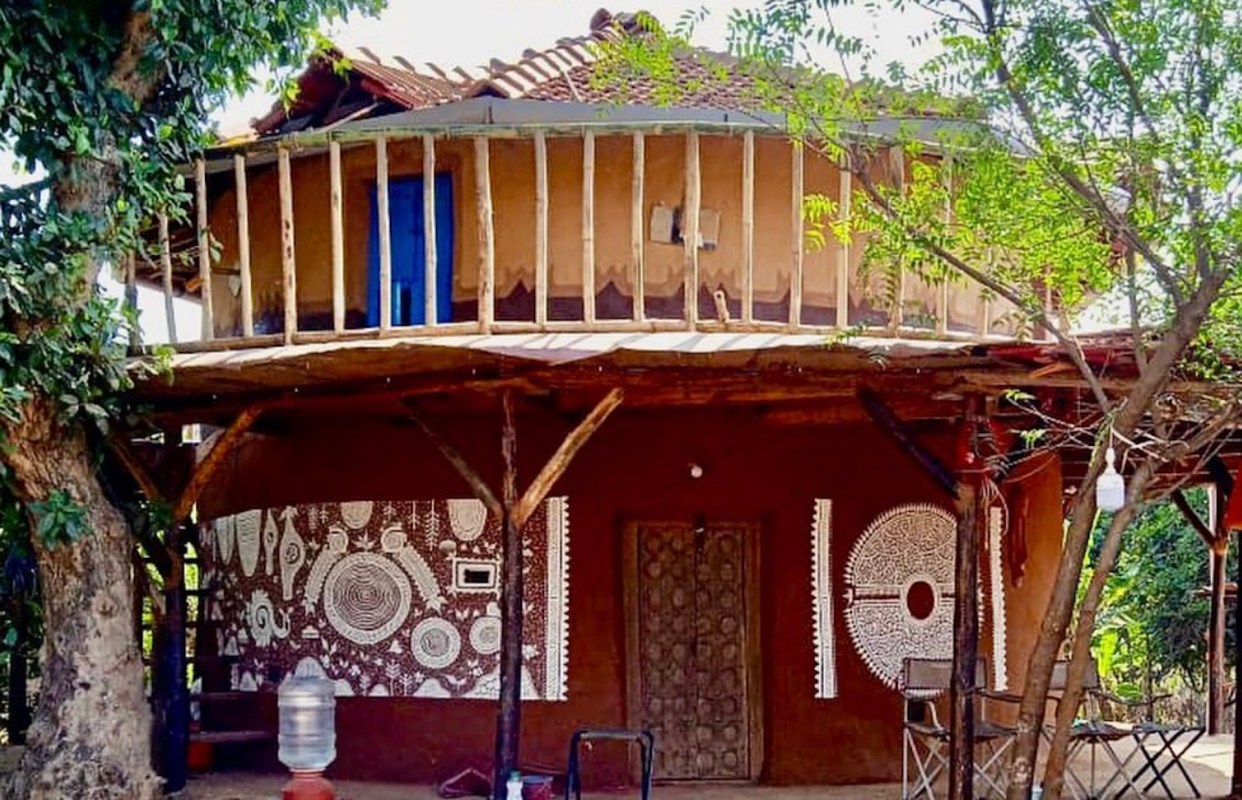As reported in Architectural Digest, a father and son, Prakash and Kiran Amati, have constructed a cob house with a unique but timeless sustainability feature. The duo built a new two-story home outside of Mumbai, India, entirely of locally sourced materials.
The report states that the dwelling was constructed with a combination of "straw, clay, local soil, stone, cow dung, and lime." The Amatis built their home with only local materials and relied purely on their own industry and volunteers from the community to raise the building.
Building their own home is one thing, but doing so with materials sourced from the area is a significant environmental achievement. In a world of suburban development and factory-made homes, building a home in this fashion means the materials didn't have to be shipped from overseas.
In addition, building a home for the purpose of living in it rather than selling it means that there is no chance of wasting resources and producing harmful pollution by building more homes than are needed.
By using only natural materials, the duo has also created a home that allows them to source everything ethically. According to the reporting in Architectural Digest, this was important to them because it helped the family in "breaking free from the monopoly of corporate production."
In 2023, corporations around the world spent nearly $900 billion on advertising, and the result is that many of us are buying things we don't need and throwing away much of what we have. Wasted products are so common in our society that we see them washing up with the tide and polluting our national parks.
In the interview, Kiran Amati said the primary reason for undertaking the project was to fulfill a way of living that he described as "produce-to-consume." It denotes a process of construction that gives Amati true agency over what he consumes, including the ability to curb overconsumption.
Sentimental signs of the process throughout the dwelling also help make it a home. "The house is full of memories of us building it," Amati told Architectural Digest.
The Amati family is not alone; people around the world are working on making housing that is more adapted to a chaotic climate. Innovators are working around the clock to create homes that are more resistant to natural disasters.
The public and private sectors are also working overtime to make changes to new buildings and appliances that will allow us to transition to a green economy and avoid the worst effects of the climate crisis.
Enthusiasm for similar projects is high online. Most famously, the YouTube channel Jungle Survival (@JungleSurvival) has accumulated 6.4 million subscribers by building traditional houses without work crews.
In an age of DIY and climate mindfulness, these projects are receiving a positive reception.
Join our free newsletter for weekly updates on the coolest innovations improving our lives and saving our planet.









